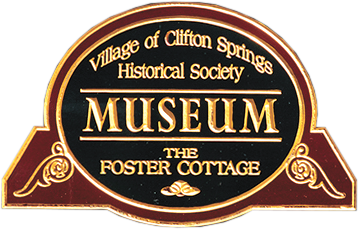Prehistoric Iroquois Settlement, Excavation at the Clifton Springs Site.
Part 4
REFUSE BONE AND SHELL
So far detailed analysis of the faunal remains found has been made. A wide range of mammal bones was recovered, with a preponderance of deer. Fish bone was encountered
everywhere, being particularly abundant in the refuse concentration associated with feature 5, and clam shell fragments were found sporadically throughout the excavation.
The only vegetal remains found were two carbonized plum pits.
ARTIFACTS
All artifacts found by us are typical of prehistoric Iroquois material culture. Chipped stone implements include four small isosceles triangular projectile points, 1 point
reject, 1 complete leaf-shaped knife, and two fragments thereof, a simple and finely worked drill without expanded base, two small scrapers, two indeterminate bifacial tool
fragments, and five utilized flakes. All are of gray Onondaga flint. The bone artifacts recovered represent a wide variety of implements and ornaments. Thirteen awls of
various sizes were found, all save two are of the simple splinter variety. Three slightly modified antler tines may have served as flaking tools. Reflective of a probably
considerable reliance on fishing are an unbarred fishhook 1 - 7/8 inches long, and a single barb, basally perforated harpoon point four inches long. The following ornaments
of bone and shell were found: three tubular bone beads ranging from one to three inches long; a small mammal patella modified to a pear shape, with a perfo at the narrow end;
three modified deer phalanges (two simply cut off at the base and perforated at the top, the third fully worked into a cone); two tubular shell beads 3/8 and 9/16 inches long;
and three perforated fresh water clam shells. Ground and polished stone implements include one complete celt 1-3/4 by 3-1/2 inches, and five fragments of celts of various
sizes, all manufactured from dark, fine-grained igneous rock. Two fragmentary whetstones are of flat pieces of hard brown sandstone, and a discoid bead is of gray shale.
Pipes are typically of some variety of the trumpet type. Four examples are simple trumpets with punctuations or short vertical incisions on the rim. One is of the squared
trumpet form, the rim exhibiting a row of punctuations above and below a horizontal incised line. The two remaining bowl fragments are of what has been called the proto-trumpet
form. One of these is of special interest, as a human face effigy, delicately executed, appears on the joint of bowl and stem, on the back of the pipe, looking away from the
smoker. The six elbow fragments recovered all show a graceful curve joining the bowl-and stem. Rough stone artifacts include six bi-pitted combination hammer-anvil stones.

